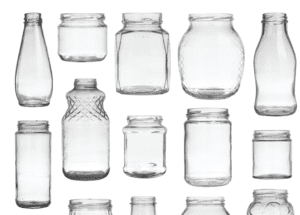A study at the University of Texas found that out of 455 common plastic products,
70% tested positive for EA.
Bisphenol A (BPA) is a chemical component present in polycarbonate plastic. Used in plastics manufacturing, BPA is usually found in beverage containers and the inside lining of canned goods. Although the lining is supposed to protect the can from corrosion and keep the metal from migrating into food, small amounts of chemicals can leach from the plastic lining creating poten-tial health issues.

According to The Food and Drug Administration (FDA), the agency that regulates all food packaging materials, the amount of BPA that migrates into our food is safe. Referred to as indirect food additives, the FDA determined that a small amount of BPA can be reasonably expected. But just because the FDA allows something doesn’t mean you want to feed it to your family.
Cautions about the safety of BPA have caused some manufacturers to find alternatives to polycarbonate, such as hard and clear, reusable, plastic products. These products are not supposed to leach BPA and are referred to as BPA-free. But just when we started to believe the problem was rectified, a study in The Environ-mental Health Journal, noted that estrogenic chemicals were leaching from BPA-free plastic products. Because chemicals with estrogenic activity (EA), have potential adverse health effects in humans, especially in fetal and infant stages, this created a new problem. The bottom line is BPA-free does not mean EA FREE, which does not mean SAFE.
In a study of all commercially available plastic resins and products, including baby bottles and other products advertised as BPA-free, researchers found that independent of the type of resin, product or retail source, leached chemicals showed reliably detectable EA. Led by Dr. George Bittner, a neurobiologist at the University of Texas, this study found that out of 455 common plastic products, 70% tested positive for EA. Even worse, when subject to real-world conditions, such as micro-waving or dishwashing, that proportion rose to 95%. Dr. Bittner’s research concluded that “in some cases, BPA-free products released chemicals having more EA than did BPA-containing products”.
This finding should inspire families to eat fresh food whenever possible. You can cut your exposure to BPA and EA by using real utensils instead of plastic, us-ing glass containers to store food instead of plastic, eating fresh instead of canned foods and using glass water bottles instead of plastic.
Dr. George Bittner has written several reports on the environmental concerns of chemicals with BPA and EA.
To read more information go to http://ehjournal.biomedcentral.com






